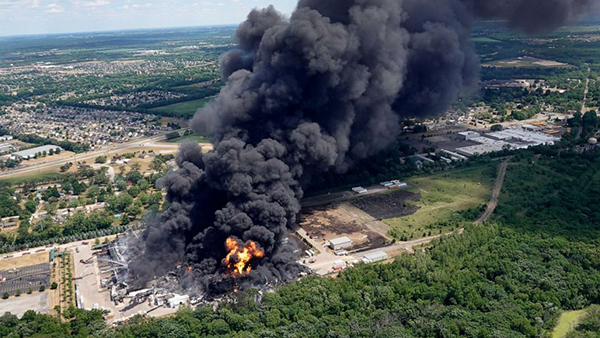OSHA holds employers responsible for preventing accidental releases of toxic, flammable or reactive chemicals. Here are the 14 PSM essentials.

By: Chris Detillier, ASP, Master Trainer/Senior Safety Advisor at Veriforce
Volatile chemicals are a common feature of the work environment in many industries and at companies of all sizes, from farming and construction sites to massive petrochemical plants and manufacturing operations. The ubiquitous presence of these reactive, flammable or toxic materials can make it all too easy to neglect safety precautions.
This past April, the Yenkin-Majestic Paint Factory in Columbus, Ohio, experienced an explosion that took one worker’s life and wrought more than $1 million in property damage. The U.S. Chemical Safety Board is still determining the explosion’s cause, but the plant was previously cited and fined by the Occupational Safety and Health Administration (OSHA) for safety violations in 2011, 2012, and 2015.
The Yenkin-Majestic Paint explosion is a reminder of the dangers that hazardous chemicals and flammables can pose to employees, contractors, and even vendors and visitors in the workplace. Employers must understand their safety risks and requirements and are responsible for educating workers and third-party contractors on appropriate procedures and policies.
OSHA prescribes a multipronged approach to protecting life and health from the accidental release of toxic, flammable or reactive substances in its Process Safety Management (PSM) standard. It applies to any organization handling more than 130 reactive and toxic chemicals, or 10,000 pounds or more of flammable gases and liquids, regardless of industry. (Retail facilities, oil or gas well drilling or servicing operations and unoccupied remote facilities are exceptions, however, and are not legally required to follow PSM.)
The agency created the PSM standard to help businesses maintain compliance with practices designed to prevent these dangerous situations. The measure is hardly a quick read, however, and covers more than a dozen aspects of safety standards, training and practices. These nuances of PSM compliance require an organization to develop and faithfully adhere to a multifaceted system spanning their operations.
PSM compliance can be a major challenge for organizations, but it doesn’t have to be. Readily available risk management software and service platforms can help employers address many of these areas.
Here are the 14 elements of every PSM program, required to achieve OSHA compliance:
A PSM program that complies with these 14 elements will better position employers to avoid any violation-related fines or penalties. More importantly, it will protect employees, contractors and visitors alike, establishing a culture of safety for all.

About the Author:
Chris Detillier, ASP, is the Senior HSE Advisor at Veriforce. In his role, Chris is a master trainer and serves as a lead subject matter expert in industry-specific content for the training product development group. Detillier holds degrees in Science Petroleum Technology and Science Safety Technology from Nicholls State University.
In this episode, I sat down with Beejan Giga, Director | Partner and Caleb Emerson, Senior Results Manager at Carpedia International. We discussed the insights behind their recent Industry Today article, “Thinking Three Moves Ahead” and together we explored how manufacturers can plan more strategically, align with their suppliers, and build the operational discipline needed to support intentional, sustainable growth. It was a conversation packed with practical perspectives on navigating a fast-changing industry landscape.